All products featured are independently chosen by us. However, SoundGuys may receive a commission on orders placed through its retail links. See our ethics statement.
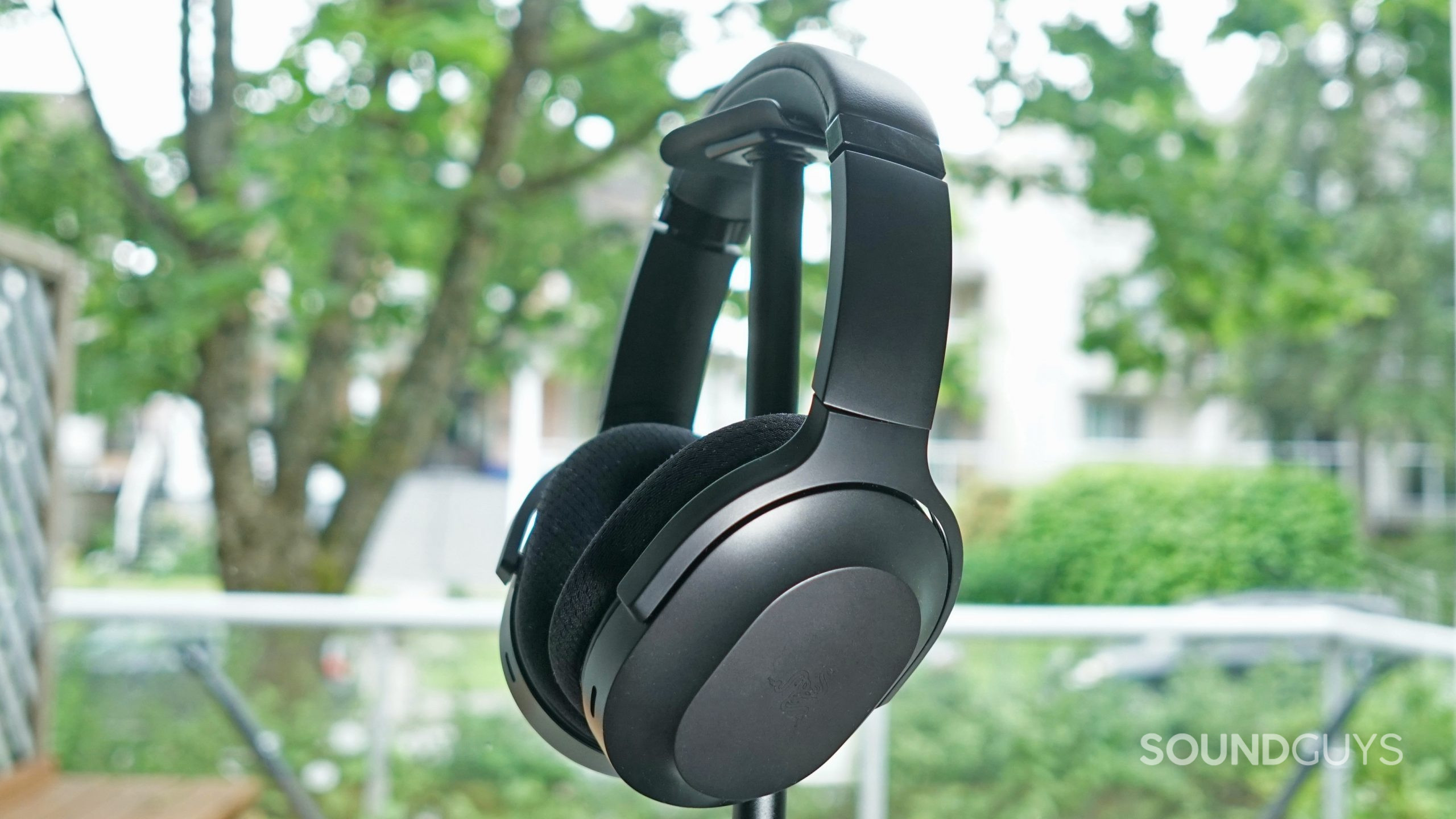
Razer Barracuda review
February 19, 2025
Razer Barracuda
Razer has been dipping its toes into the lifestyle audio market with releases like the Opus headphones and Hammerhead True Wireless Pro. However, those never quite made as big an impact as the company’s gaming peripherals, and now it’s splitting the difference. The new Razer Barracuda is a gaming headset and a pair of Bluetooth headphones all rolled up into one. We spent a week with the Barracuda to see if that dual functionality is enough to really sell it.
- February 19, 2025: We answered more frequently asked questions.
- August 21, 2023: We adjusted the wording in certain sections and included prices for other associated products.
Gamers who like to occasionally touch grass will appreciate the added Bluetooth functionality. Remote will like the simplicity of a gaming headset and the lack of an obtrusive boom mic. Really, anyone who likes the idea of a gaming headset that looks more like a regular pair of headphones may find something to like here.
What is it like to use the Razer Barracuda?
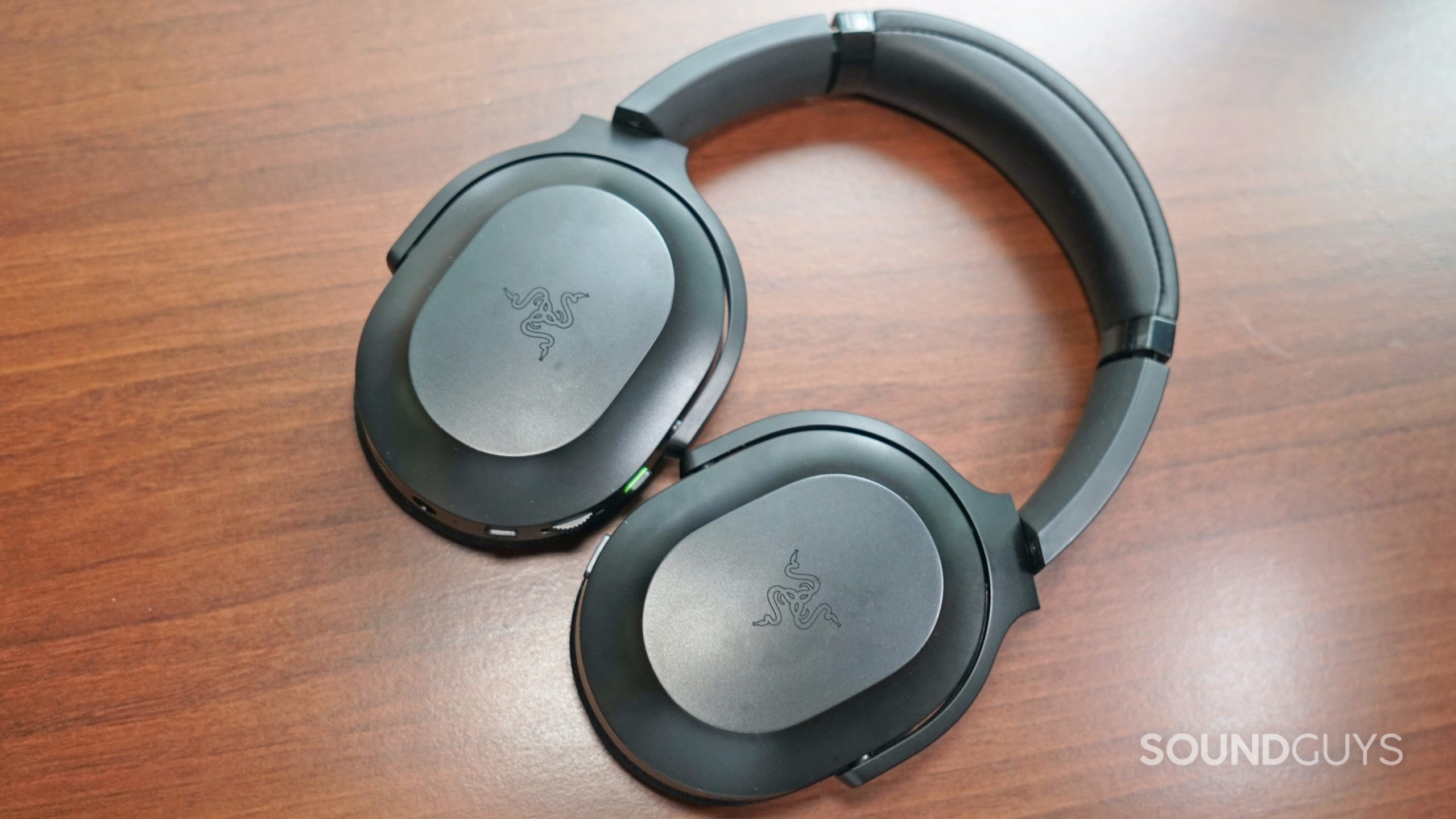
The Razer Barracuda really does feel like a mix between a handful of the company’s other audio products, for better and for worse. This wireless gaming headset is made mainly of plastic, with a steel strip running through the headband. The band and headphone hinges look and feel just like the Razer Opus—there’s a leatherette-covered, wrap-around cushion on the band, and the hinges rotate 90 degrees to lay flat in exactly the same way. However, the ear cups don’t collapse or fold inward here.
The Barracuda features the same mesh fabric ear pads that made the older Barracuda X (2021) so comfortable. This means heat build-up isn’t an issue, and establishing a decent seal is easy—even if you have glasses. However, the ear cups are rather shallow, so if your ears are on the larger side, you may find they push against the plastic driver housing. Under those conditions, this headset may only stay comfortable for an hour or two before you’ll need a break.
How do you control the Razer Barracuda?
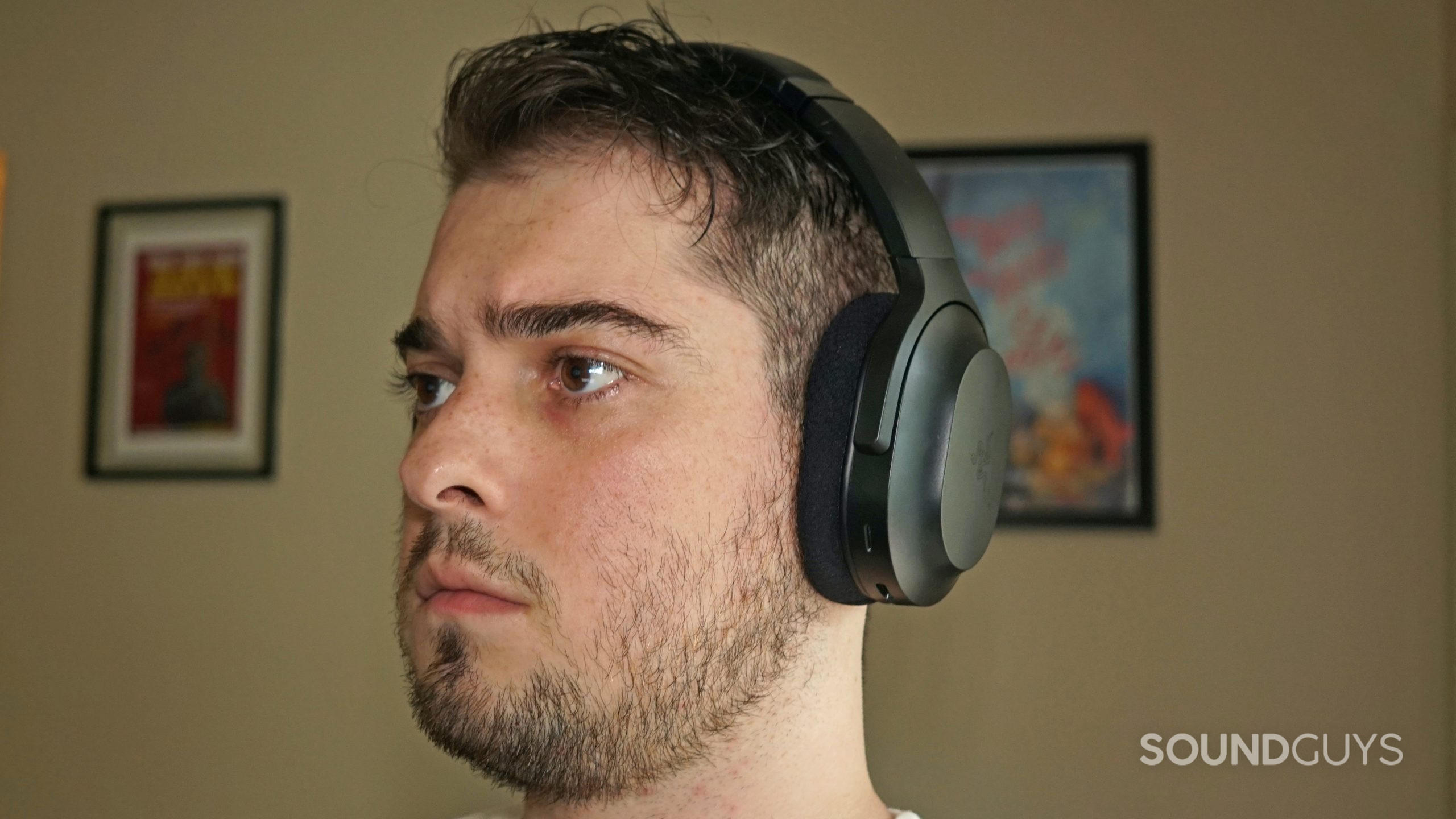
Actually using the headset is pretty straightforward. On the edge of the left ear cup, there’s a mic mute toggle, a dial for headphone volume, and a power button, along with the headset’s USB-C charging port and 3.5mm jack. On the edge of the right headphone, there’s a multi-function button to handle Bluetooth pairing and the headset’s Smart Switch feature.
Smart Switch just lets you toggle between 2.4GHz and Bluetooth connections directly from the headset. This is a nice feature for those who hop back and forth between their PC/console and smartphone.
Should you get Razer Synapse for the Barracuda?
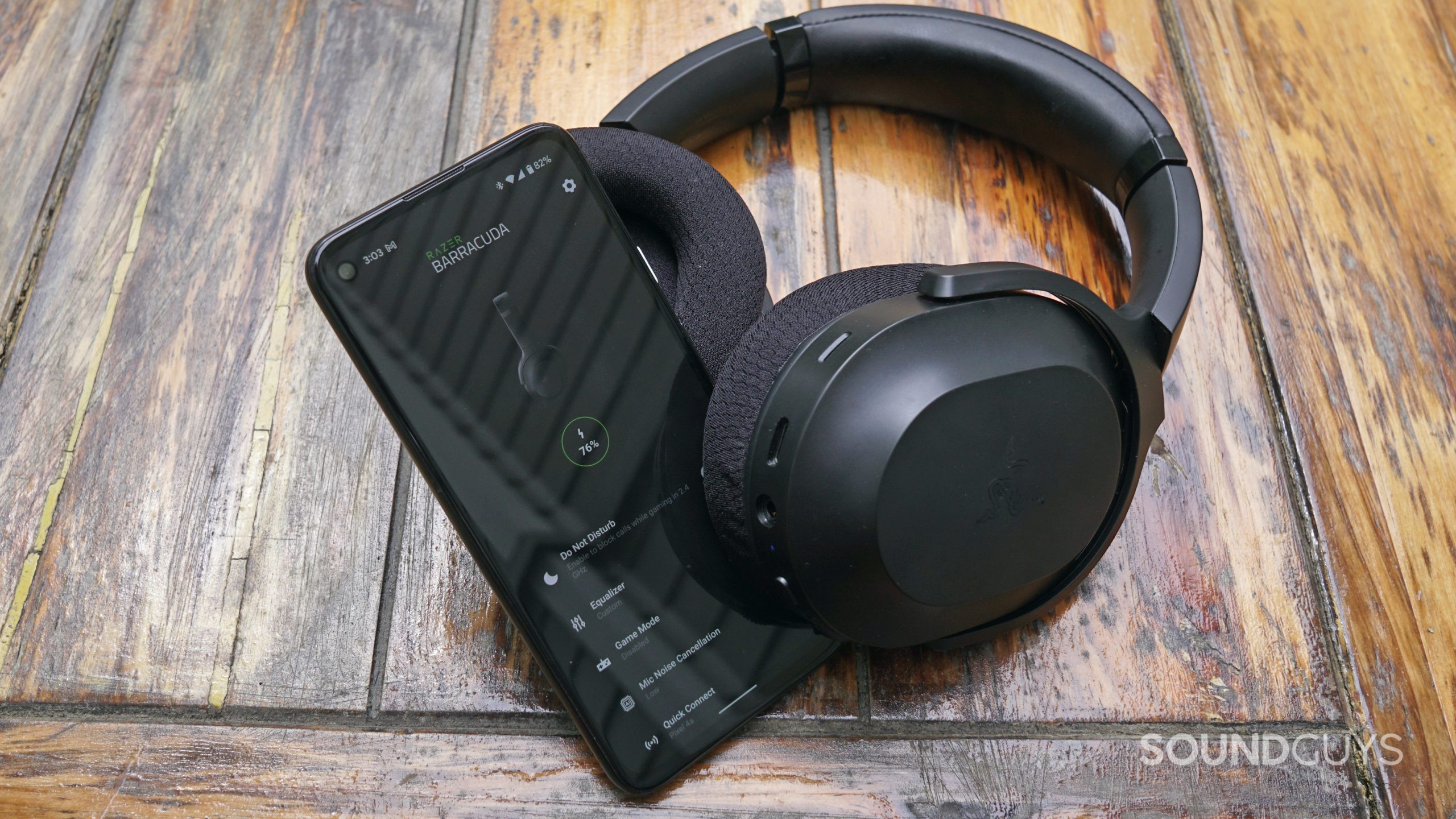
Razer’s Synapse 3 gaming companion app makes an appearance with the Barracuda, much like with many of its PC-oriented gaming headsets. This app is pretty straightforward and brings lots of nice features like headphones and mic EQ, THX Spatial Audio, and firmware updates for the headset. However, Synapse isn’t the only software for the Razer Barracuda.
The headset also supports the Razer Audio mobile app, which is similarly rudimentary to Synapse but capable enough. The app lets you set EQ, adjust the mic’s noise canceling, and turn on a low-latency game mode.
How does the Razer Barracuda connect?
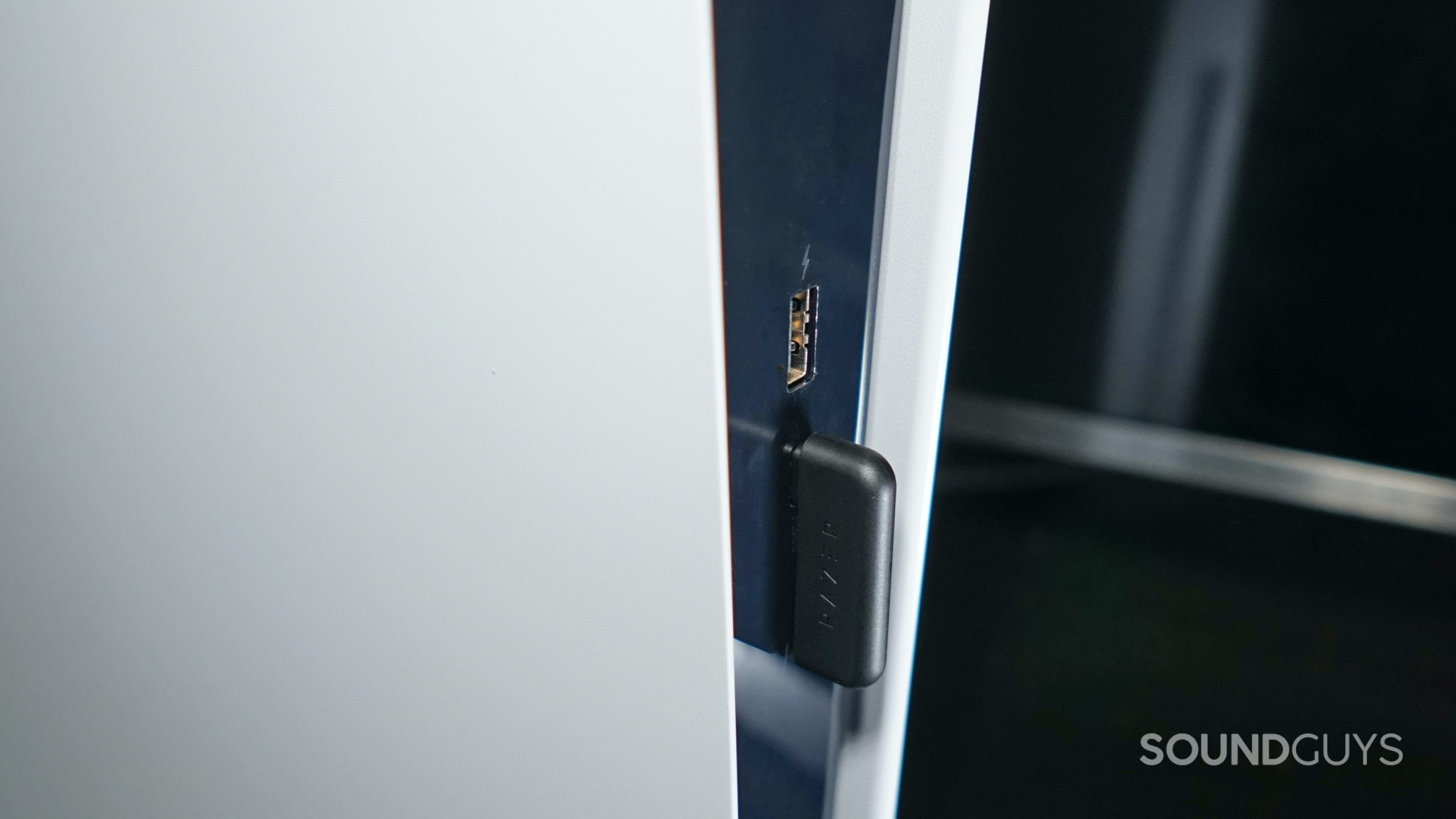
The Razer Barracuda can connect to your device of choice in a number of ways. It has a USB-C dongle like a typical wireless gaming headset and supports Bluetooth 5.2 and the SBC and AAC codecs like a typical pair of wireless headphones. It also supports 3.5mm wired connections when the battery runs out. Basically, it works just about everywhere—the dongle will work for your PC and PlayStation needs, you can use Bluetooth for your mobile devices, and 3.5mm for anything with a headphone jack (which includes Xbox consoles). If you’re a Nintendo Switch gamer, you can use the USB-C dongle, Bluetooth, or 3.5mm, so you’ve got plenty of options there.
There’s no multipoint support, nor does the Barracuda support simultaneous audio output from its wired or wireless connection methods. However, you can pair the headset wirelessly over Bluetooth and maintain a connection to its USB-C dongle and double-tapping the Bluetooth pairing button, which will let you swap back and forth between the two sources. Switching in this manner takes a few seconds, and sometimes it doesn’t quite take, which leads to no audio playing until you hit the button again, but it’s reliable enough that you shouldn’t miss a phone call if you’re mid-game and can’t be bothered to take your headphones off.
How long does the Razer Barracuda battery last?
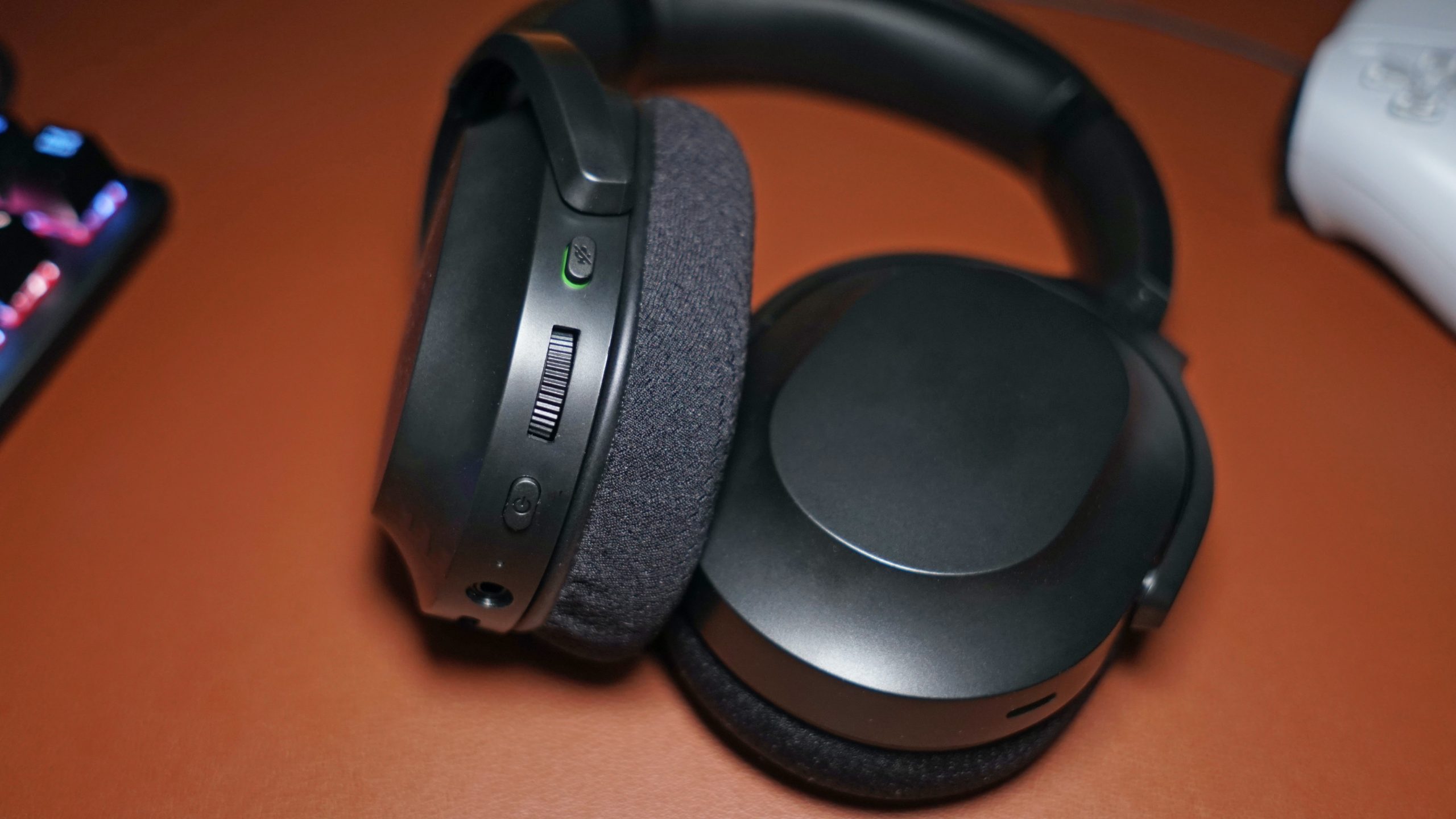
Razer claims the Barracuda can last up to 40 hours on a single charge and we found it well exceeds that. In our testing of real music output peaking at 75dB (SPL), the Razer Barracuda lasted 59 hours and 53 minutes on a single charge—almost 50% longer than advertised. Battery performance like this is very good for a gaming headset, though it falls short of recent high points like the Turtle Beach Stealth 600 Gen 2 MAX and current king HyperX Cloud Alpha Wireless.
How well does the Razer Barracuda block out noise?
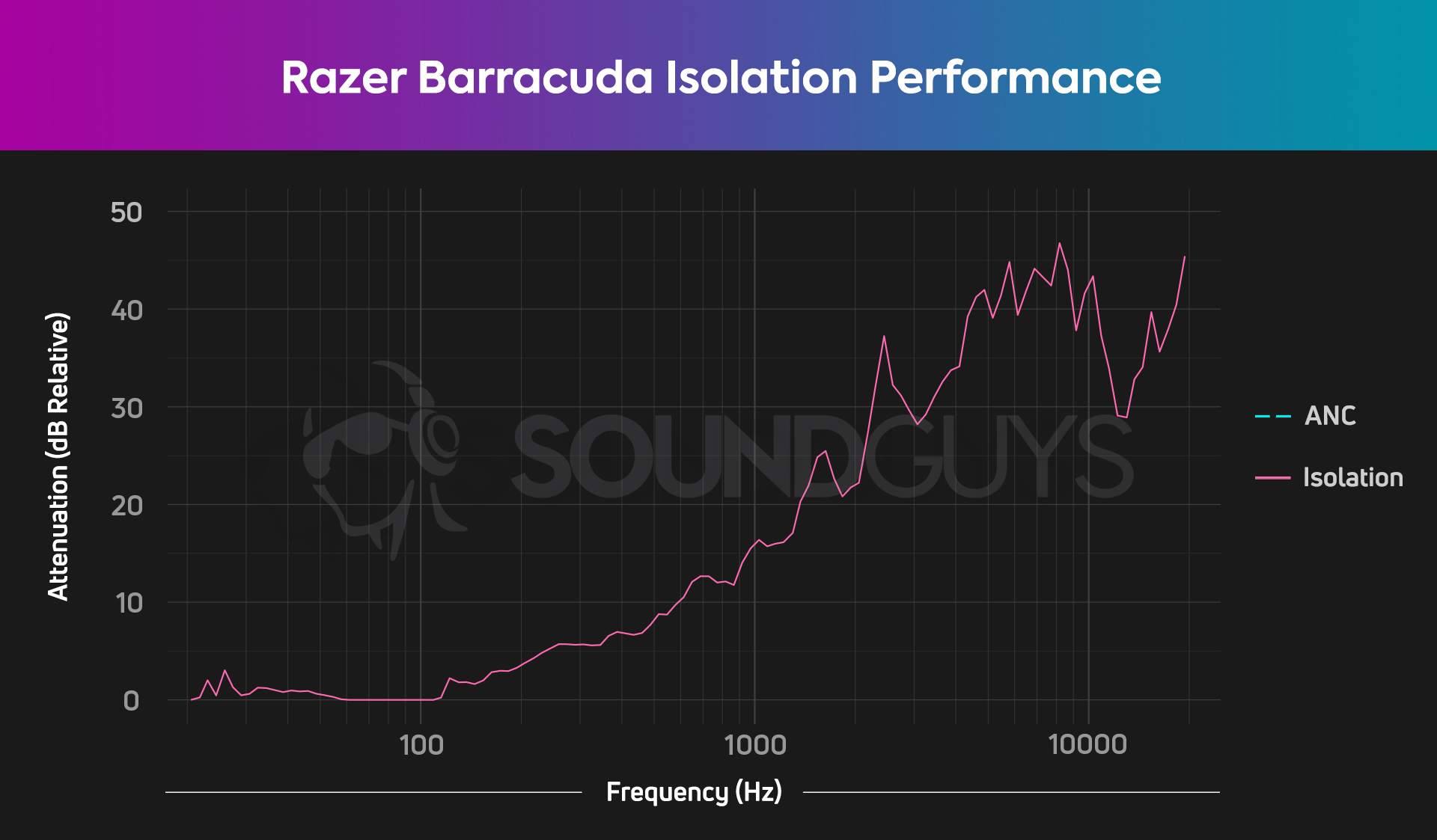
The Razer Barracuda features decent high-end attenuation for a pair of over-ear headphones. There’s no active noise canceling (ANC), which means that low-end droning sounds don’t get stopped much at all. However, passive isolation performance like this means high-frequency sounds like the screech of a tire or the clatter of dishes in the kitchen should be reduced pretty significantly. If you decide to take this to a cafe, it won’t block everything out, but the chatter of people should be lessened.
How does the Razer Barracuda sound?
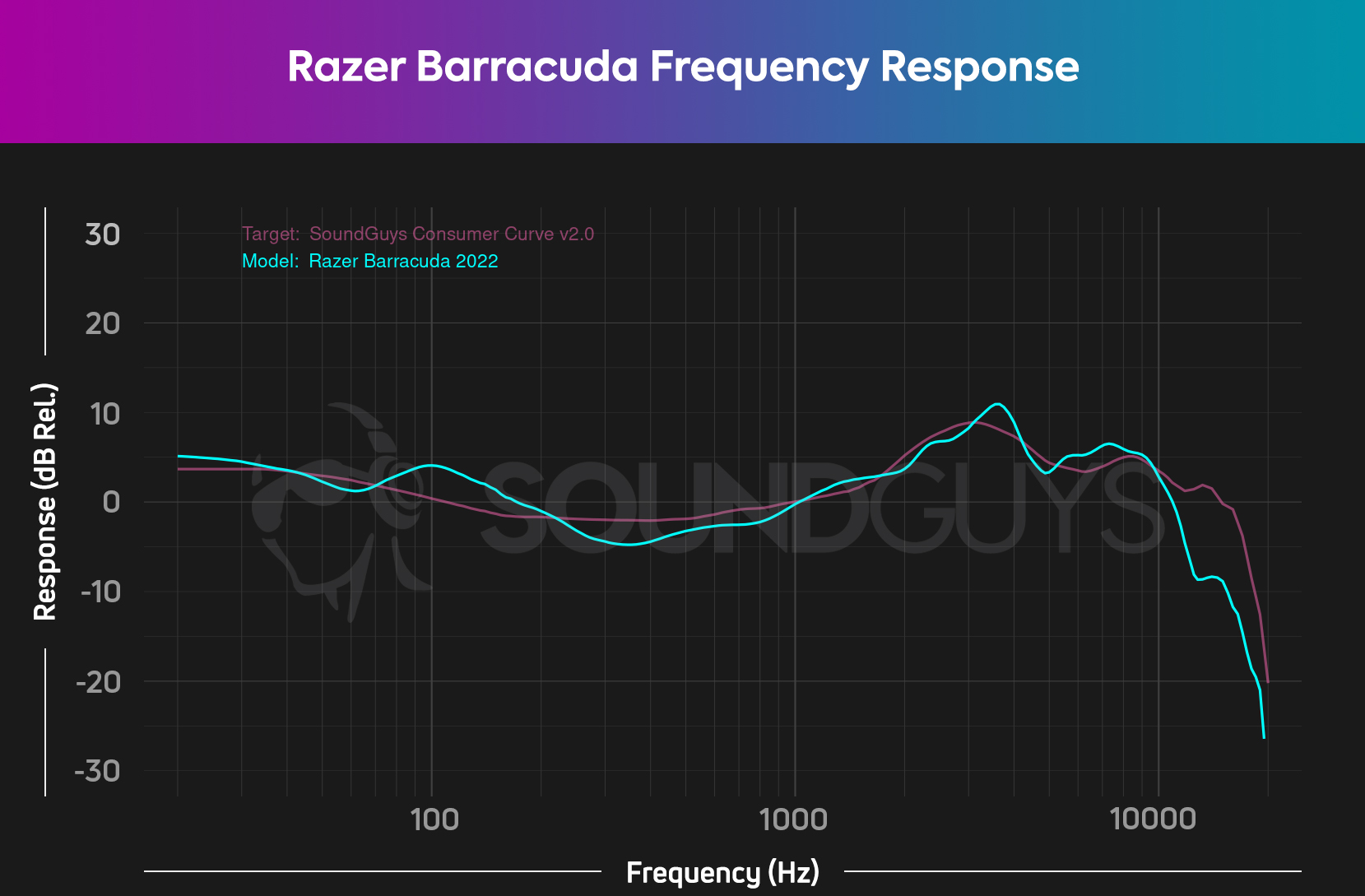
The Razer Barracuda sounds very good for most uses, hewing fairly close to our preference curve with some exceptions. There’s a notable bump in the bass range around 100Hz and a less pronounced under-emphasis in midrange output around 300-400Hz. While this isn’t the most intense deviation, it’s worth mentioning that the fundamental frequencies of the voice fall in these areas, which means that voices could come through a little oddly.
Highs, mids, and lows
The Razer Barracuda sounds pretty good for most kinds of music, but the low-mid wonkiness of the frequency response can make instances of very layered instruments sound a little indistinct. In Boogie Man by Vulfmon, the lead guitar comes through clearly, but the bass guitar, rhythm guitar, and keys all get a little lost in each other, creating a crush of slightly indistinct noise. If you really listen closely, you can hear the different instruments well enough, but it takes being intentional about it. Of course, you can always EQ the headset easily enough.
In-game audio output like this shouldn’t prove an issue for any genre. The bass and sub-bass are largely kept in check, which means the rumble of explosions and gunfire shouldn’t drown out subtler sounds like footsteps any more than they’re supposed to.
Playing Tony Hawk Pro Skater 1+2 on PlayStation 5, the Razer Barracuda handled the mix of punk music and environmental sounds quite nicely. And on PC, games occasionally a frantic mix of audio cues from a game like League of Legends all come through clearly and coherently—you won’t be missing any pings because of this headset. More atmospheric audio experiences like Sekiro also sound quite nice, and the Barracuda plays nicely with the PlayStation 5’s spatial sound feature.
How is the microphone on the Razer Barracuda?
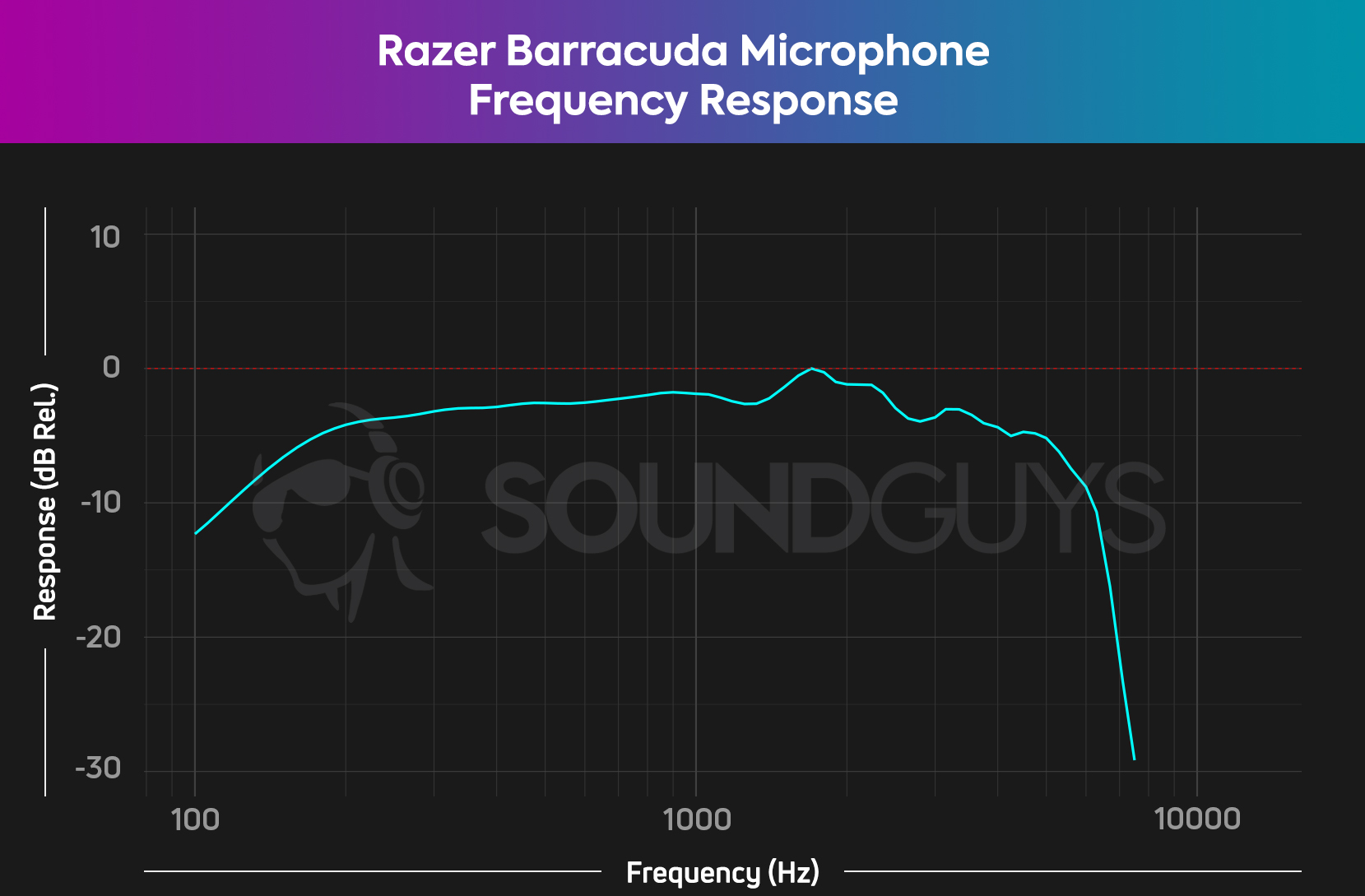
The microphone is one of the Razer Barracuda’s most interesting features. Like the Logitech G433 before it, this gaming headset jettisons the boom mic in favor of an embedded beamforming microphone array. This design is supposed to split the difference between the fidelity of a gaming headset mic and the visually unobtrusive design of microphones embedded in most Bluetooth headphones. The result is something that sounds very good for an embedded microphone but still sounds a little muffled compared to a boom mic. It should handle calls pretty well but don’t expect the clarity you’d need for podcast recording or anything like it.
Razer Barracuda microphone sample (Ideal):
Razer Barracuda microphone sample (Office):
Razer Barracuda Microphone sample (Reverberant space):
How does the microphone sound to you?
Should you buy the Razer Barracuda?
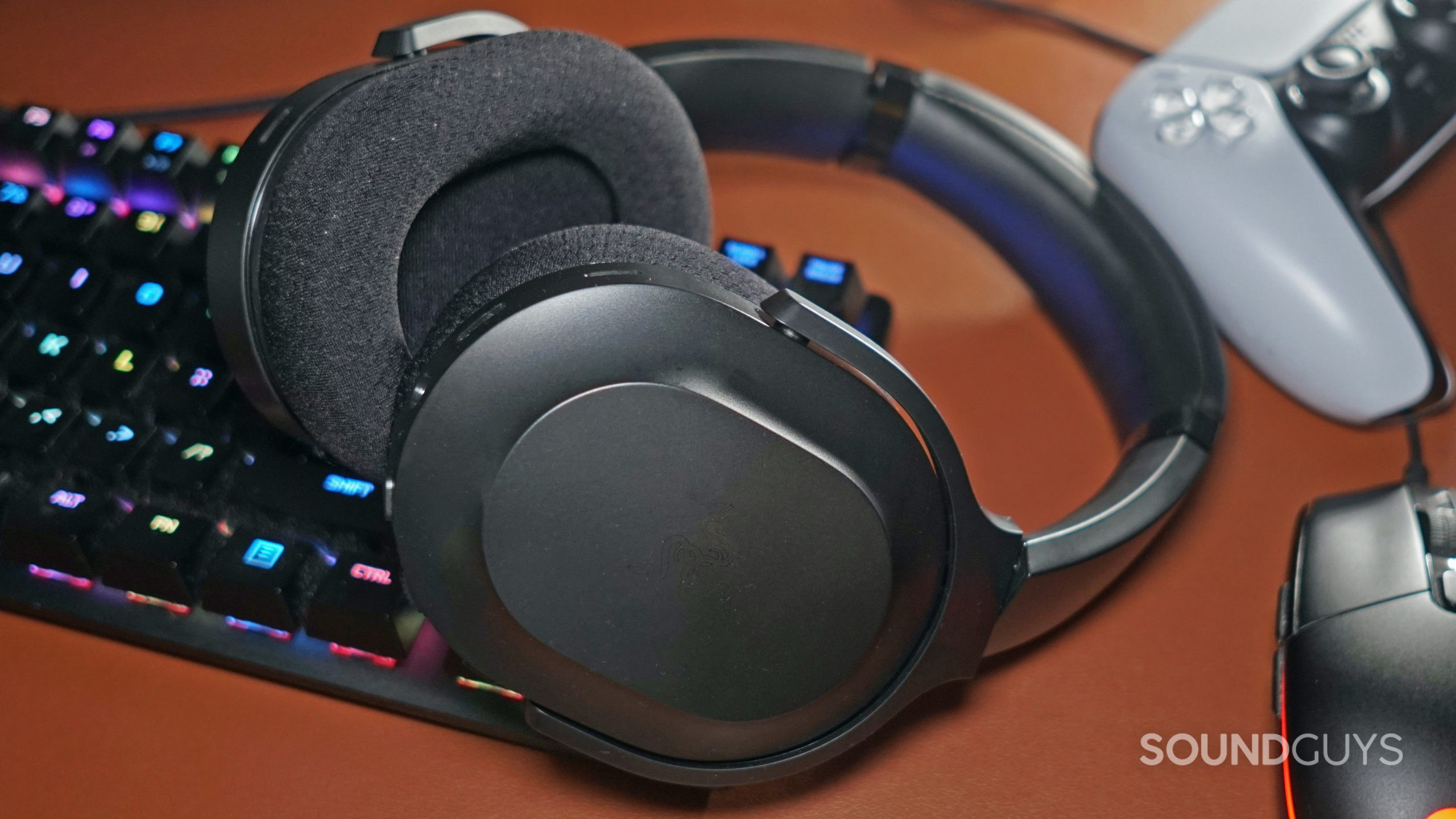
If you’re looking for a comfortable, unobtrusive gaming headset you can use basically everywhere, the Razer Barracuda is worth a look. It’s got great battery life, it sounds good, and you won’t feel self-conscious wearing it out in public. The embedded microphone isn’t the move if you’re looking for crystal clear call quality, but compared to similar features from non-gaming headphones, it’s very good.
For $99 at Amazon, the Razer Barracuda is a little pricey, but it’s cheaper than a lot of headsets with similar specs on paper. Basically, you could do better, but you’d probably have to spend more to get it.

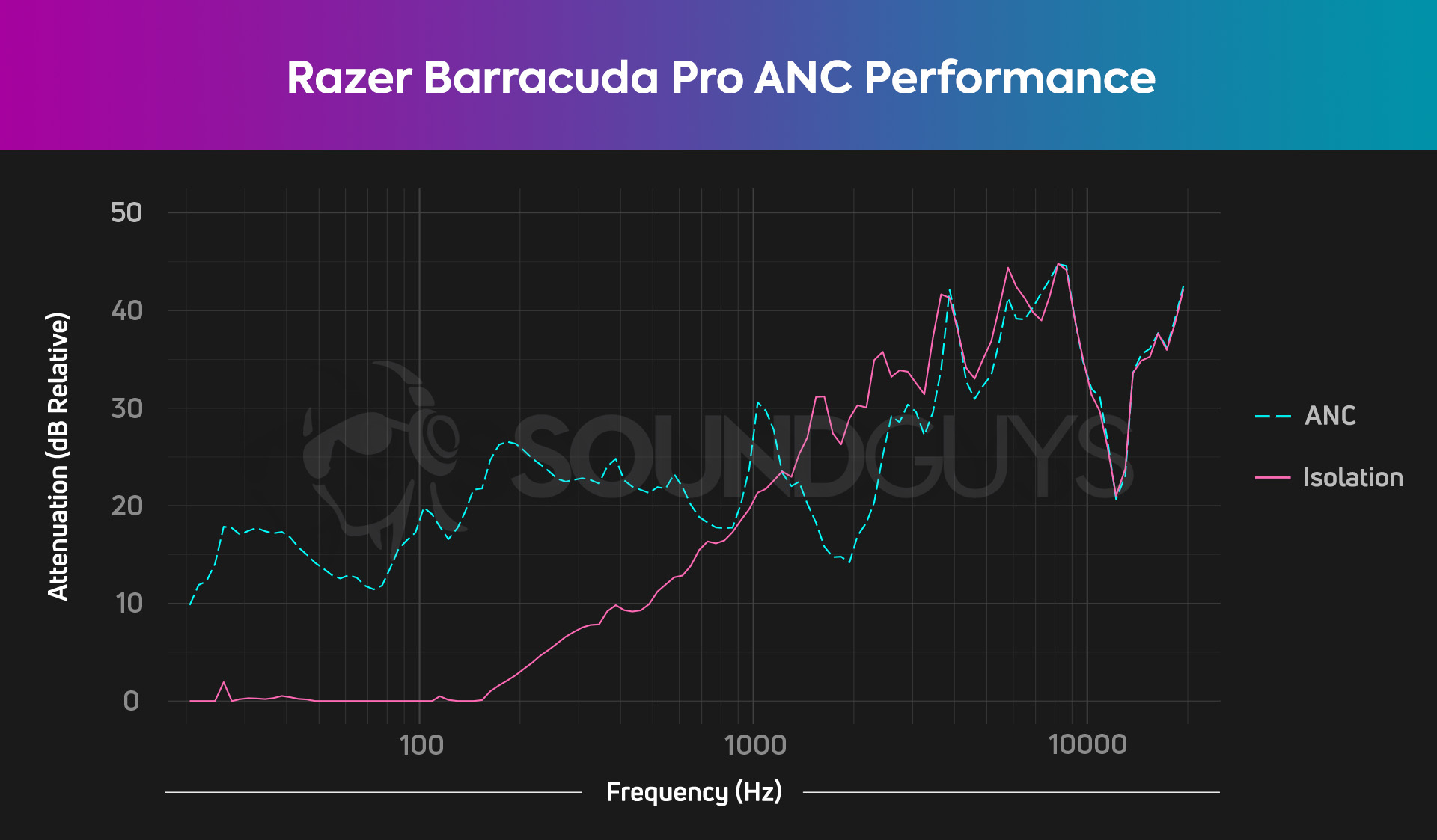
The Barracuda Pro has active noise canceling (ANC) and bests the Barracuda, which relies solely on passive isolation. The leatherette ear pads on the Barracuda Pro also separate it from the Barracuda, which uses more pedestrian woven fabric ear pads. Otherwise, these headsets look very similar to one another, arguably indistinguishable. For many, the THX AAA technology, a special amplifier, won’t matter much but the Barracuda Pro has it while the Barracuda does not.


What are some alternatives to the Razer Barracuda?
If you’re looking for a gaming headset with Bluetooth capabilities, there are many options, but they usually cost closer to $200. Options like the SteelSeries Arctis Nova 7 Wireless and Turtle Beach Stealth 700 Gen 2 MAX offer reliable connectivity with Bluetooth and their included USB dongles—they’re both more expensive than the Barracuda, but they also support simultaneous audio output over both connection methods.
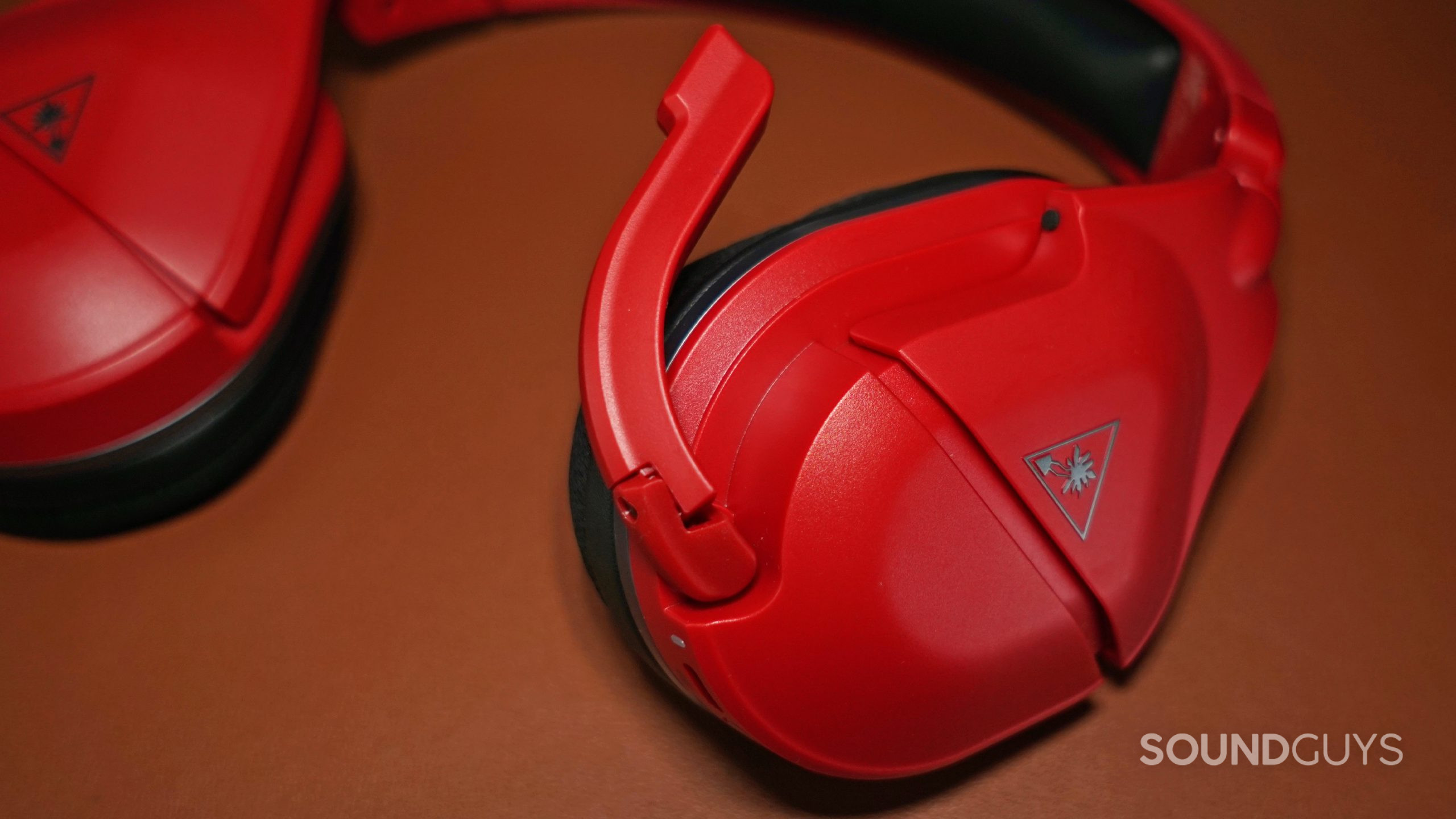
If you’re looking for something you can use across lots of gaming platforms, you don’t need to spend as much to get a great option. The Bluetooth-less sibling of the Stealth 700 MAX, the Turtle Beach Stealth 600 Gen 2 MAX is cheaper than the Barracuda at $129 at Amazon and features a USB dongle with a switch to toggle between Xbox and multi-platform modes, so you can connect wirelessly to Xbox and PlayStation consoles just as well (the Stealth 700 Gen 2 MAX has this switch too). The SteelSeries Arctis 1 Wireless and the Razer Barracuda X (2022) both use a similar USB-C wireless dongle, which works on PlayStation, PC, Nintendo Switch, and mobile devices—they’re both $50 USD cheaper than the Barracuda, too. Oh, and the Barracuda X also has Bluetooth connectivity, so you can remove the boom mic and take it out and about.
Frequently asked questions about the Razer Barracuda
It depends on your needs. The Razer Barracuda is a more versatile headset, offering Bluetooth, 2.4GHz wireless, and wired connectivity, making it suitable for both gaming and everyday use. However, its embedded microphone isn’t as clear as the boom mic on the Razer BlackShark series, which may be a dealbreaker if you prioritize voice chat quality. If you want a headset that works well across multiple devices and doesn’t look like a gaming headset, the Barracuda is a solid choice. If you need a more traditional gaming headset with a better mic, the BlackShark may be the better option.
No, the Razer Barracuda does not have active noise canceling (ANC). It relies on passive isolation, which helps reduce higher-frequency noises like chatter or clinking dishes but does little to block out low-end sounds like engine hums. If you need strong noise cancelation, you’ll need a different headset with ANC.
Yes, the Razer Barracuda works with the PlayStation 5 using its USB-C wireless dongle. It also supports Bluetooth and 3.5mm wired connections, making it compatible with multiple devices. However, keep in mind that it doesn’t support simultaneous audio mixing between wireless and wired connections.
The only non-black color option is for the new Razer Barracuda X, which also comes in white and pink models.
Thank you for being part of our community. Read our Comment Policy before posting.